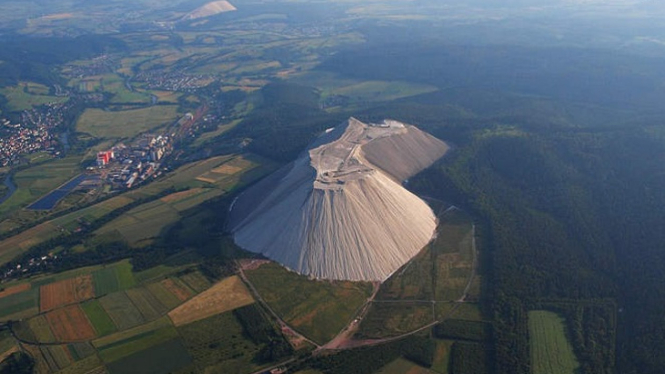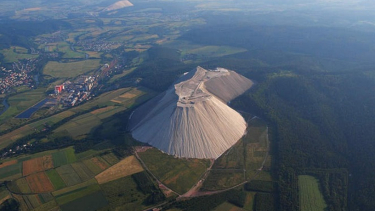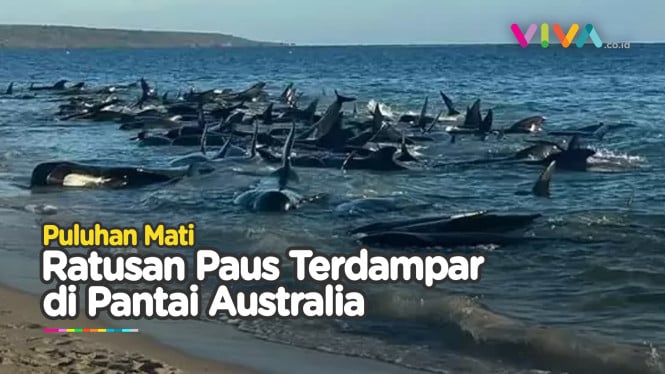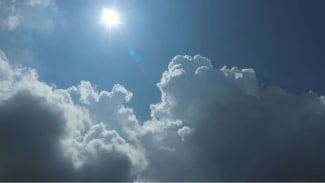VIVA – The Herringen town, in central Germany, is home to a heap of sodium chloride or table salt so big that it has come to be known as Monte Kali. It is the world’s largest artificial salt mountain.
The origin of Monte Kali can be traced back to the year 1976 when potash salt started being extracted from mines around the town of Hessen. Back then, potash was used to make products like soap and glass, but today it is an important ingredient in several fertilizers, synthetic rubber, and even some medicines, so extraction intensified over the last few decades.
The problem with potash is that mining generates a lot of sodium chloride as a byproduct, so people need somewhere to store it. The company operating the mines started dumping all this salt a few miles from Herringen, and over the years it created a giant salt mountain locals named Monte Kali or Kalimanjaro.
As of 2017, Monte Kali stands at 530 meters (1,740 ft) above sea level and covers an area of over 100 hectares, so calling it an artificial mountain is no exaggeration.
Gunung garam.
- U-Report
The ascent took the average person around 15 minutes, and the 23-hectare summit plateau offered views of the entire Werra Valley all the way to the Rhön and the Thuringian Forest. Although it’s hard to estimate how much salt Monte Kali consists of, most sources we’ve checked put its current mass at approximately 236 million tons.
This thing covers an area as large as 114 football fields and is as heavy as 23,600 Eiffel Towers. And with over 1,000 tonnes of table salt added to it every single hour of the day – about 7.2 million tonnes a year – it’s only getting bigger.
Unfortunately, behind the beauty of the artificial salt mountain, which is known as the largest in the world, it’s apparently adjacent to forests and rivers. Until it often makes a lot of questions from several people, regarding the impact of the mountain on the surrounding environment.
But responding to these questions, a study has finally been found. And the result, is that there are piles of salt that grow and produce a lot of salt water. This has caused the Werra River to become salty, as well as the groundwater in the area.
The artificial salt mountain can be described as an environmental disaster. But the potash industry is huge in the region, now employing thousands of people. So, shutting down production is not a viable option for the authorities.





















